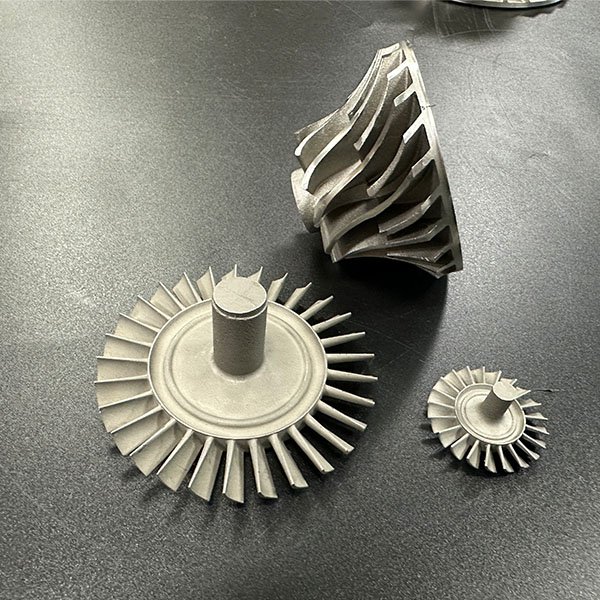
Turbine blades are key components in gas turbines, used to receive kinetic energy from high-temperature and high-pressure airflow, drive the turbine disc to rotate, and thus drive the mechanical device to work.




The turbine disc is one of the main rotating components in the turbine, responsible for supporting the turbine blades and transmitting kinetic energy, converting gas power into mechanical power.
The stator is a stationary component in the gas turbine, used to fix the guide airflow, so that it interacts with the turbine blades and improves the energy conversion efficiency.




The rotor is a rotating component in the gas turbine, including the turbine disc and the compressor rotor, responsible for receiving and transmitting kinetic energy to drive the mechanical device to work.
The turbine nozzle is one of the key components in the gas turbine, used to guide high-speed airflow, control the flow rate and direction of the airflow, and improve the kinetic energy conversion efficiency.




The guide vane, also known as the guide wing, is located in the turbine and is used to control the flow direction and speed of the airflow, optimize the entry angle of the airflow, and improve the efficiency of the turbine.
A segment is a component in a turbine, commonly found in the compressor part of a gas turbine, used to increase the kinetic energy of the gas flow and reduce pressure.




Springs play various roles in gas turbines, such as maintaining the position of components and providing elastic support.
Bolts and Nuts are used to connect and fix the various components of a gas turbine to ensure tight connection and stability between components.
Advantages: high specific strength, low density, excellent corrosion resistance and good high temperature performance.
Applications: aircraft engine turbine impellers, marine engineering and other applications that require high strength and light weight.
Advantages: high strength and hardness can be achieved through aging treatment, with good toughness and processing performance.
Applications: aircraft engine parts
Advantages: excellent corrosion resistance, high strength, good wear resistance
Applications: marine engineering equipment, chemical and petroleum equipment, equipment in high temperature corrosive environments
The forging process improves the internal structural density of the metal and eliminates pores and defects in casting, thereby improving the strength and durability of the material.
Rough forgings have better toughness, fatigue resistance and impact resistance due to grain refinement.
The rough forging process can customize the shape and size according to specific application requirements, laying a good foundation for subsequent finishing.
Compared with the casting process, the material utilization rate of the forging process is higher, reducing the waste of raw materials.
Aerospace:
Turbine blades: Rough forged turbine blades are widely used in aero engines. Through subsequent finishing and heat treatment, they can meet extremely high strength and temperature requirements.
Turbine disc: Turbine disc is a key component in the engine that withstands high temperature and high pressure. The rough forging process improves its fatigue resistance and creep resistance.
Power generation:
Gas turbine blades: Blades used in gas turbines in power plants need to have high temperature strength and corrosion resistance. The rough forging process provides an excellent substrate to ensure the durability and efficiency of the blades.
Turbine shaft: The turbine shaft in the power generation equipment is formed by rough forging, has excellent mechanical properties, and is suitable for high-load operation environment.
Industrial application:
Compressor blades: Industrial compressor blades are formed by rough forging, have high strength and wear resistance, and are suitable for high pressure and high temperature environments.
Marine application:
Marine turbine parts: The marine environment is harsh, and marine turbine parts are formed by rough forging, with excellent corrosion resistance and high strength, suitable for long-term marine operation.
Automotive industry:
Turbocharger impeller: The turbocharger impeller of high-performance vehicles is formed by rough forging, has higher strength and durability, and can withstand the huge stress caused by high-speed operation.
High strength and durability
Excellent fatigue performance
Complex shape manufacturing capability
Material diversity